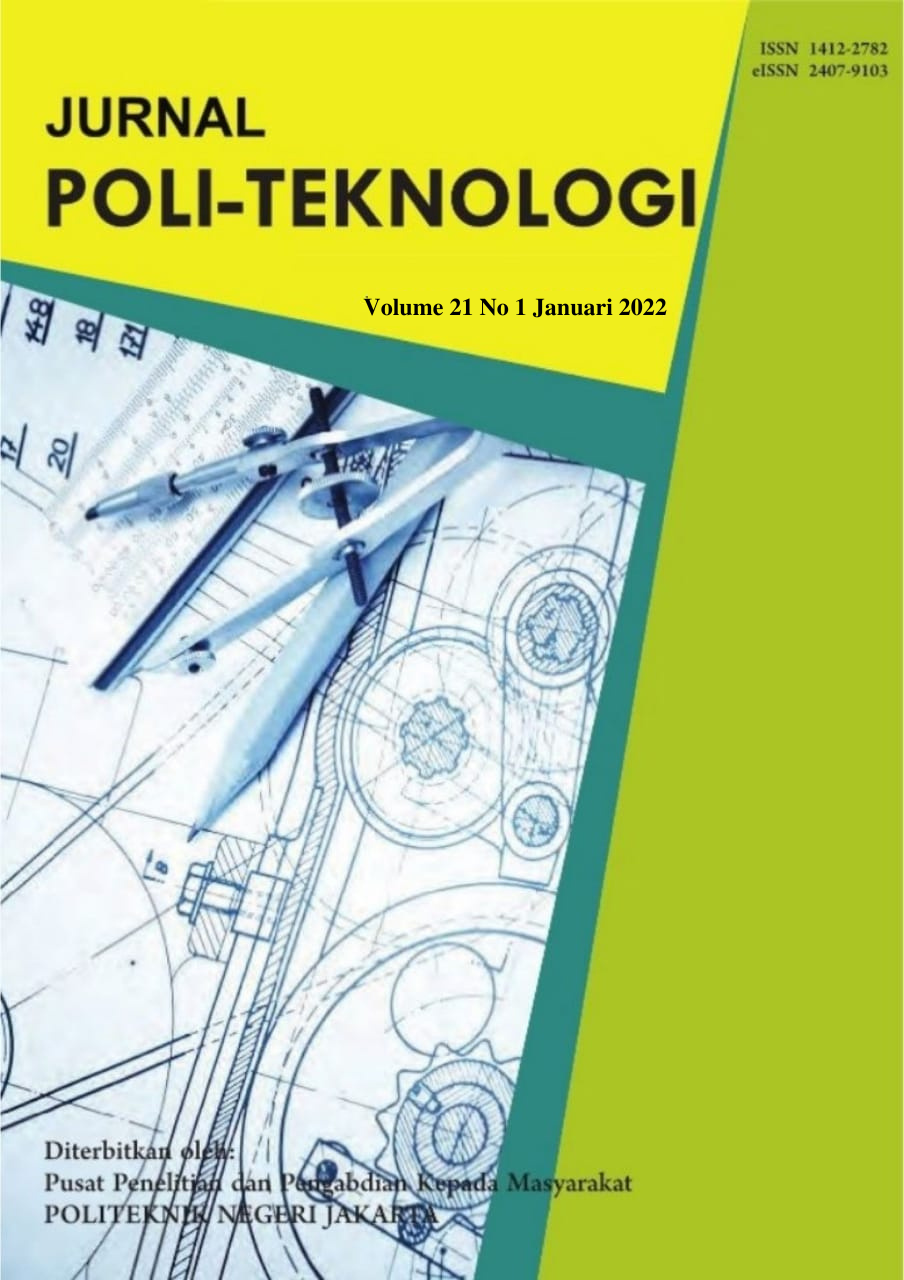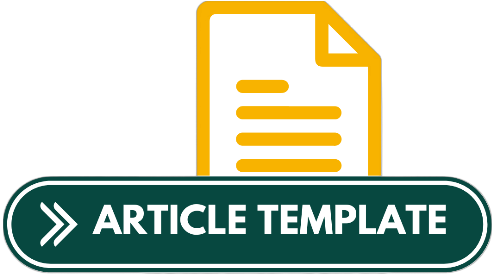RANCANG BANGUN FILTER AIR CETAK UNTUK LAB HIDROLIKA
DOI:
https://doi.org/10.32722/pt.v21i1.4299Abstract
Clean water is a basic requirement of the Hydraulics Laboratory for experimental/practical applications. Sometimes the water used has decreased in quality because it is often used repeatedly, making the water smelly and cloudy. Therefore it needs to be discarded or replaced. So that the use of clean water is not wasteful, a printed water filter is designed for the purpose of purifying and saving water use. The initial stage is to design, then make a printed water filter model without using water filter materials in general. The next stage is the function test, whether it is successful or not, able or not to purify the water. The test results are then re-evaluated until the highest percentage of functional success is obtained. The final stage of the research is to test the functionality and test samples. Testing of water quality samples that pass through the printed water filter is compared with raw well water samples. The results of laboratory tests of water quality are then analyzed and a conclusion is drawn, how much is the percentage of clarity, the higher the percentage, the higher the water quality. The research target is a printed water filter model that can be applied especially to the Hydraulics Laboratory and a wider target that can be applied by all levels of society, and the clean water supply industry. The advantages of this filter are that it is easy to make by all walks of life, the design is simple and the materials are also easily available wherever we are, whether in the city or in the village.
Keywords : Design, Filter, Water, Recycle.
Downloads
References
S. Yudo dan N. I. Said, “Kondisi Kualitas Air Sungai Surabaya Studi Kasus: Peningkatan Kualitas Air Baku PDAM Surabaya,” Jurnal Teknologi Lingkungan, vol. 20, no. 1, 2019, doi: 10.29122/jtl.v20i1.2547.
T. Hernaningsih, “Analisis Kualitas Air Di Ruas Sungai Batang Toru Dengan Metode Storet Dan Indeks Pencemaran,” hernaningsih, vol. 13, no. 2, 2021, doi: 10.29122/jrl.v13i2.4678.
I. Zuraida, “Gorong-gorong Sebagai Media Filter Air Bersih,” Jurnal Poli- Teknologi, vol. 20, no. 1, pp 65–73, 2021, doi: 10.32722/pt.v20i1.3505.
I. Zuraida, W. Wattini, dan H. Rasidi, “Pengaruh Komposisi Media Filter Air Terhadap Permeabilitas Dan Claritas,” Jurnal Poli-Teknologi, vol. 17, no. 1, 2018.
A. Ratnawulan, E. Noor, dan P. Suptijah, “Pemanfaatan Kitosan dalam Daur Ulang Air sebagai Aplikasi Teknik Produksi Bersih,” Jurnal Pengolahan Hasil Perikanan Indonesia, vol. 21, no. 2, 2018, doi: 10.17844/jphpi.v21i2.23044.
E. Hastuti dan R. R. Agustien, “Daur ulang air limbah rumah tangga dengan teknologi biofilter dan hybrid constructed wetland di kawasan pesisir,” Jurnal Permukiman, vol. 8, no. 3, 2013.
F. S. Primawati, “Sistem Penjernihan Air Groundtank Lppmp Uny Sebagai Air Minum Dengan Memanfaatkan
Karbon Aktif Batok Kelapa, Pasir Aktif Pantai Indrayanti, Dan Kerikil Aktif Kali Krasak,” Fakultas Matematika dan Ilmu Pengetahuan Alam, Universitas Negeri Yogyakarta, 2016.
J. Manis, Z. E. A. Mays, S. Sturt, L. N. Komariah, S. Ahdiat, dan N. D. Sari, “Pembuatan Karbon Aktif dari Bonggol Jagung Manis (Zea Mays Saccharata Sturt) dan Aplikasinya Pada Pemurnian Air Rawa,” Jurnal Teknik Kimia, vol. 19, no. 3, 2013.
M. Mariana, “Pengaruh Serbuk Cangkang Kerang Darah (Anadara Granosa) Terhadap Kejernihan Air Lahan Gambut Di Bagan Siapiapi,” Bio-Lectura, vol. 2, no. 2, 2015, doi: 10.31849/bl.v2i2.320.
N. I. Said, “Daur Ulang Air Limbah (Water Recycle) Ditinjau Dari Aspek Teknologi, Lingkungan Dan Ekonomi,” Jurnal Air Indonesia, vol. 2, no. 2, 2018, doi: 10.29122/jai.v2i2.2300.
Setiyono, “Teknologi Pengolahan Limbah Cair dan Daur Ulang Air Limbah,” Prosiding Seminar Nasional dan Konsultasi Teknologi Lingkungan, 2018.
D. Damayanti, E. M. Wuisan, dan A. Binilang, “Perencanaan Sistem Jaringan Pengolahan Air Limbah Kecamatan Mapanget,” Jurnal Sipil Statik, vol. 6, no. 5, 2018.
T. Hernaningsih dan S. Yudo, “Alternatif Teknologi Pengolahan Air Untuk Memenuhi Kebutuhan Air Bersih Di Daerah Pemukiman Nelayan Studi Kasus Perencanaan Penyediaan Air Bersih Di Daerah Pedesaaan Nelayan Kab. Pasir, Kalimantan Timur,” Jurnal Air Indonesia, vol. 3, no. 1, 2018, doi: 10.29122/jai.v3i1.2316.
U. S. Riyal Gusdi, Hasnah Wita, “Pembuatan Alat Penyaringan Air,” Jurnal Nasional Ecopedon, vol. 4, no. 1, 2017.
A. Hak, Y. Kurniasih, dan H. Hatimah, “Efektivitas Penggunaan Biji Kelor (Moringa Oleífera, Lam) Sebagai Koagulan Untuk Menurunkan Kadar TDS dan TSS Dalam Limbah Laundry,” Hydrogen: Jurnal Kependidikan Kimia, vol. 6, no. 2, 2019, doi: 10.33394/hjkk.v6i2.1604.
Downloads
Published
How to Cite
Issue
Section
License
Copyright (c) 2022 Ida Zuraida, Wattini, Nizar, Harun Rosanti

This work is licensed under a Creative Commons Attribution-ShareAlike 4.0 International License.







